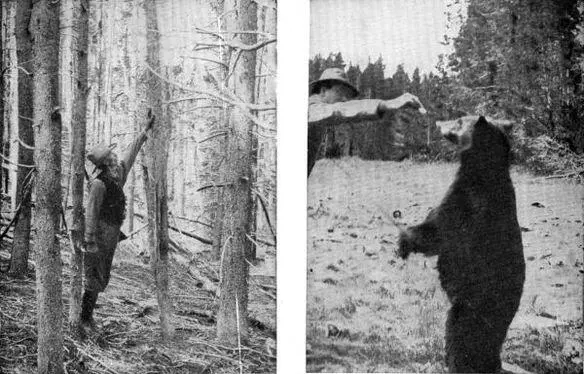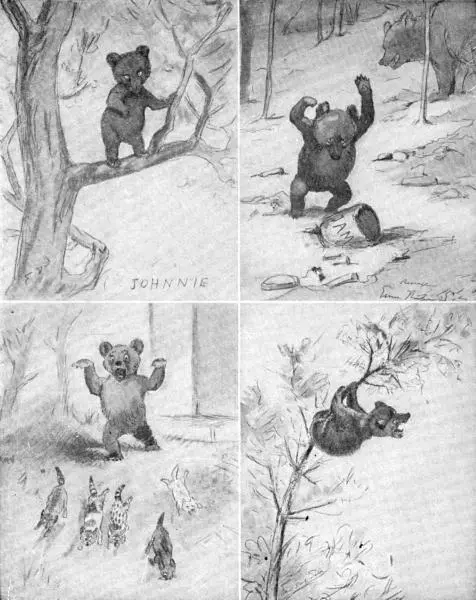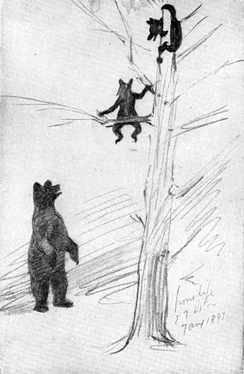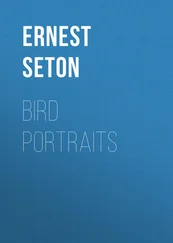Ernest Seton - Wild Animals at Home
Здесь есть возможность читать онлайн «Ernest Seton - Wild Animals at Home» весь текст электронной книги совершенно бесплатно (целиком полную версию без сокращений). В некоторых случаях можно слушать аудио, скачать через торрент в формате fb2 и присутствует краткое содержание. Год выпуска: 2009, Жанр: Природа и животные, на английском языке. Описание произведения, (предисловие) а так же отзывы посетителей доступны на портале библиотеки ЛибКат.
- Название:Wild Animals at Home
- Автор:
- Жанр:
- Год:2009
- ISBN:нет данных
- Рейтинг книги:5 / 5. Голосов: 1
-
Избранное:Добавить в избранное
- Отзывы:
-
Ваша оценка:
- 100
- 1
- 2
- 3
- 4
- 5
Wild Animals at Home: краткое содержание, описание и аннотация
Предлагаем к чтению аннотацию, описание, краткое содержание или предисловие (зависит от того, что написал сам автор книги «Wild Animals at Home»). Если вы не нашли необходимую информацию о книге — напишите в комментариях, мы постараемся отыскать её.
Wild Animals at Home — читать онлайн бесплатно полную книгу (весь текст) целиком
Ниже представлен текст книги, разбитый по страницам. Система сохранения места последней прочитанной страницы, позволяет с удобством читать онлайн бесплатно книгу «Wild Animals at Home», без необходимости каждый раз заново искать на чём Вы остановились. Поставьте закладку, и сможете в любой момент перейти на страницу, на которой закончили чтение.
Интервал:
Закладка:
XLV. The Bears at feeding time
Photos by F. Jay Haynes

XLVI. (a) Tom Newcomb pointing out the bear's mark.
Photo by E. T. Seton
(b) E. T. Seton feeding a Bear.
Photo by C. B. Harmon
Appendix
Mammals of the Yellowstone Park
A list of the Species Found in the Park in 1912
By Ernest Thompson Seton
With assistance from the U. S. Biological Survey,
and Colonel L. M. Brett, in charge of the Park.
Elk or Wapiti ( Cervus canadensis )
Abundant. By actual official count, and estimate of stray bands, they number at least 35,000, of which about 5,000 winter in the Park.
Mule Deer or Rocky Mt. Blacktail ( Odocoileus heminus )
Common. The official census gives their number at 400, of which at least 100 winter about Fort Yellowstone.
Whitetail Deer ( Odocoileus virginianus macrourus )
A few found about Gardiner, on Willow Creek, on Indian Creek, at Crevasse Mt. and in Cottonwood Basin. The official census gives their number at 100.
Moose ( Alces americanus )
Formerly rare, now abundant in all the southerly third of the Park. In 1897 they were estimated at 50. The official census gives their number at 550 in 1912.
Antelope or Pronghorn ( Antilocapra americana )
Formerly abundant, now rare; found only in broad open places such as Lamar Valley, etc. Their numbers have shrunk from many thousands in the '70's to about 1,500 in 1897, and 500 in 1912.
Mountain Sheep or Bighorn ( Ovis canadensis )
Formerly rare, now common about Mt. Evarts, Mt. Washburn and the western boundary. In 1897 there were about 100, perhaps only 75; in 1912 they are reported numbering 210 by actual count.
American Buffalo or Bison ( Bison bison )
Steadily increasing. In 1897 there were about 30; they now number 199 by actual count. These are in two herds, of 49 wild, and 150 in the fenced corrals.
Richardson Red-squirrel ( Sciurus hudsonicus richardsoni )
Abundant in all pine woods.
Northern Chipmunk ( Eutamias quadrivittatus luteiventris )
Extremely abundant everywhere.
Least Chipmunk ( Eutamias minimus pictus )
Common about Mammoth Hot Springs.
Golden Ground-squirrel ( Citellus lateralis cinerascens )
Common.
Picket-pin Ground-squirrel ( Citellus armatus )
Abundant on all level prairies.
Prairie-dog ( Cynomys ludovicianus )
Gen. Geo. S. Anderson told me long ago that the Prairie-dogs, so abundant on the Lower Yellowstone, were sometimes seen as far up as the Park at Gardiner.

XLVII. Johnnie Bear: his sins and his troubles
Sketches by E. T. Seton

XLVIII. Johnnie happy at last
Photo by Miss L. Griscom
Yellow Woodchuck, Rock Chuck or Marmot ( Marmota flaviventer )
Abundant on all mountains.
Rocky Mt. Flying Squirrel ( Sciuropterus alpinus )
Said to be found. I did not see one.
Beaver ( Castor canadensis )
Abundant and increasing.
Grasshopper Mouse ( Onychomys leucogaster )
I found a typical colony of this species on the Yellowstone near Yancey's but did not secure any.
Mountain Deer-mouse ( Peromyscus maniculatus artemisiae )
Abundant everywhere.
Mountain Rat, Pack-rat or Wood-rat ( Neotoma cinerea )
Said to be found, but I saw none.
Redbacked Vole or Field-mouse ( Evotomys gapperi galei )
Not taken yet in the Park but found in all the surrounding country, therefore, probable.
Common Field-mouse ( Microtus pennsylvannicus modestus )
Recorded by Vernon Bailey from Lower Geyser Basin in the Park.
Long-tailed Vole ( Microtus mordax )
Vernon Bailey records this from various surrounding localities, also from Tower Falls. Doubtless it is generally distributed. This is the bobtailed, short-eared, dark gray mouse that is found making runs in the thick grass, especially in low places.
Big-footed Vole ( Microtus richardsoni macropus )
Not yet taken in the Park, but found in surrounding mountains, therefore probable.
Muskrat ( Fiber zibethicus osoyoosensis )
Common and of general distribution.
Mole-gopher or Gray Gopher ( Thomomys talpoides )
A Gopher of some kind abounds in the Park. I assume it to be this.
Rocky Mt. Jumping Mouse ( Zapus princeps )
Found in all the surrounding country, and recorded by E. A. Preble from near Yellowstone Lake.
Yellow-haired Porcupine ( Erethizon epixanthus )
Somewhat common in the pine woods on the Continental Divide.
Coney, Rock Rabbit, Pika, or Calling Hare ( Ochotona princeps )
Abundant in all slide rock.
Rocky Mt. Cottontail ( Sylvilagus nuttalli grangeri )
Plentiful about Gardiner and in some of the lower regions of the Park, but not general.
Snowshoe Rabbit ( Lepus bairdi )
Common and generally distributed.
White-tailed Jack Rabbit ( Lepus campestris )
Common and generally distributed.
Mountain Lion, Cougar or Puma ( Felis hippolestes )
In 1897 it was considered extremely rare; probably not more than a dozen were then living in the Park; since then it seems to have increased greatly and is now somewhat common in the mountainous parts. Their numbers are given officially at 100 in 1912.
Canada Lynx ( Lynx canadensis )
Common.
Bobcat or Mountain-cat ( Lynx uinta )
Somewhat common.
The Big-tailed Fox ( Vulpes macrourus )
Common.
Timber Wolf ( Canis occidentalis )
Very rare, noticed only at Hell Roaring Creek and Slough Creek. On August 25, 1912, Lieut. M. Murray saw two in a meadow two miles southeast of Snow Shoe Cabin on Slough Creek. They were plainly seen in broad daylight; and were nearly white.
Coyote ( Canis latrans )
Abundant everywhere, although officially reckoned they numbered only 400 in 1912.
Otter ( Lutra canadensis )
Common, particularly around the Lake and the Canyon.
Mink ( Lutreola vison energumenos )
Common.
Long-tailed Weasel ( Putorius longicauda )
Said to be found. I did not see any.
Short-tailed Weasel ( Putorius cicognanii )
Included because its range includes the Park.
Marten ( Mustela caurina )
Found throughout the Park, but not common.
Pekan or Fisher ( Mustela pennanti )
Rare. Gen. G. S. Anderson tells me that in the early '90's he took the skin of one from a poacher.
Wolverine ( Gulo luscus )
Of general distribution, but not common.
Northern Skunk ( Mephitis hudsonica )
Rare, but found at Mammoth Hot Springs and Yancey's.
Badger ( Taxidea taxus )
Common.
Raccoon or Coon ( Procyon lotor )
Said to occur. Fifteen years ago at Gardiner I was shown one that was said to have been taken in the Park, but it was not certain.
Читать дальшеИнтервал:
Закладка:
Похожие книги на «Wild Animals at Home»
Представляем Вашему вниманию похожие книги на «Wild Animals at Home» списком для выбора. Мы отобрали схожую по названию и смыслу литературу в надежде предоставить читателям больше вариантов отыскать новые, интересные, ещё непрочитанные произведения.
Обсуждение, отзывы о книге «Wild Animals at Home» и просто собственные мнения читателей. Оставьте ваши комментарии, напишите, что Вы думаете о произведении, его смысле или главных героях. Укажите что конкретно понравилось, а что нет, и почему Вы так считаете.





